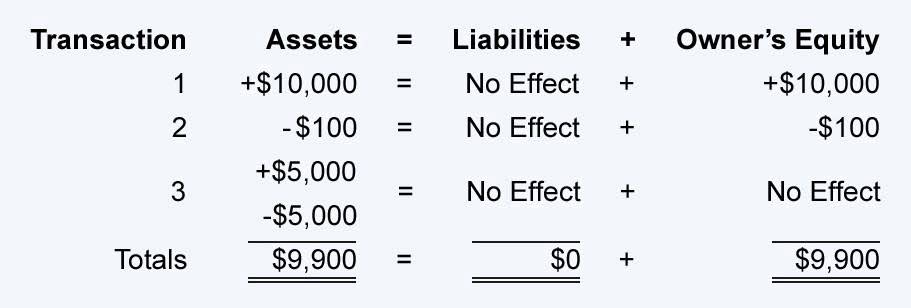What is a credit note? And when to use one
Trade Forex CFDs with your Multi-Asset Broker LimeFx
25/11/2021Total Debt-to-Total Assets Ratio: Meaning, Formula, and What’s Good
07/12/2021
A credit memo can be a simple communication between two entities while still providing all necessary data regarding financial exchanges between them. By understanding this idea better, businesses can ensure their accounts receivable records are correct and improve their financial health. A debit memo created by a business for a buyer typically represents a negative amount from the perspective of the buyer. The issuance of a debit memo is necessary for correcting errors or adjusting accounts, it generally reflects a negative financial consequence for the recipient. There can be instances wherein a business encounters that they have undercharged the buyer, or maybe there are some additional charges that the buyer needs to pay.
Credit Memo Journal Entries for Certain Transactions
- A credit memo is a separate transaction that amends the original invoice.
- If you are a customer availing services from a contractor, and you immediately inform them to stop offering services, you would be entitled to receive the amount that you already paid for.
- It can help them keep better track of their financial records and ultimately help their business succeed.
- By following these rules, businesses can ensure that their credit memos are correct and that both parties agree.
Avoid any unauthorized adjustments by granting access to only relevant members of your team, ensuring each credit memo is verified and signed. Let’s briefly elaborate, exploring each common type of credit memo used in business. In contrast, a debit memo, also called a debit memorandum, decreases the amount of money in an account.

Ensure Compliance With Accounting Standards and Policies
Another situation where a credit memo may be used is when a customer is given a discount for a purchase. Maybe you paid an invoice early and got a credit for a percentage of the invoice amount. Or maybe the product was on sale or you purchased in bulk and got a discount through a credit memo. There are a few scenarios where you, a bank, a credit card company, or a vendor may use a credit or debit memo.

Credit memo impact on buyer’s accounting
If this is allowed by the accounting software, it reduces the aggregate dollar amount of invoices outstanding, as well as to reduce payments to suppliers. Debit and credit memos are integral components of accounts receivable management, allowing businesses to adjust financial records accurately and efficiently. In business-to-business transactions, a company issues a credit note to the buyer to amend an incorrect credit memo example invoice, acknowledge the return of goods, or adjust the prices post-purchase. Depending on the scenarios, the credit note may reduce the full or partial amount that a buyer owes. Understanding both credit memos and debit memos can help you more easily interpret bank and credit card statements, as well as vendor invoices. Let’s look at the scenario where a customer makes a late payment on their credit card bill.
- Here, the sales revenue account has been debited, and the accounts receivable have been credited with the difference amount.
- Creating a credit memo manually was tedious work that consume a lot of time and effort.
- For example, Company A sells goods worth $1000 to Company B and an invoice has been generated.
- Credit memos help organizations manage their money in a responsible way and keep track of any deductions or refunds that are due because they accurately and efficiently record transactions.
- Getting a credit memo may require adjustments to the buyer’s financial statements.
- In this case, the bookkeeping department might be committing some fraud.
You’ll know your adjustments are accurate, authorized, and properly documented every time. While it might take some extra effort upfront, the payoff in clean books and satisfied customers is well worth it. In all these cases, the goal of the credit memo is to ensure the customer gets charged the correct amount and to maintain accurate financial records. By promptly issuing credit memos when needed, you demonstrate your commitment to customer satisfaction and transparency. Moreover, the seller should review the open credit memos at the end of each reporting period. It will help them to see if the customer owes money that can be linked to open accounts receivable.
What Are Debit Memos?
Or has one of your customers ever opened a package to find damaged or defective goods? A credit memo provides a credit, or increase, in the amount of money in an account. For a bank or credit card statement, https://www.bookstime.com/articles/what-is-a-virtual-accountant you will find the date of the debit charge, a description of the debit, and the amount. A credit memo should reference the original invoice number, date, and details related to the initial transaction.

What is a Credit Memorandum?
Most credit memos are issued under the circumstances of owed, accounts payable, and reduce payments. A credit memo is an important part of accounting because it lets the person who gets it lower their accounts receivable balance, and the person who sends it lower their accounts payable balance. Businesses of all sizes often use credit memos to make up for mistakes or differences between customers and suppliers.
- Company B promptly notifies Company A about the damaged raw material.
- Without beating around the bush, let’s quickly know the entries to record in the books of accounts.
- Get notified when your invoices are read and track when they are due.
- Essentially, a credit memo adjusts the customer’s account balance by reducing the amount owed, providing clarity and transparency in financial transactions.
- The documentation then goes through the review by authorized personnel, such as supervisors, managers, or designated approvers.
- No matter what, credit memos are important for business and should be handled carefully to ensure they are correct and follow the rules.
Credit Memos: What They Are and How To Write One
A credit memo, also known as a credit memorandum, is a document issued by the buyer to the seller and is different from an invoice. It is issued to reduce the amount that buyer owed to the seller under the forms of earlier invoice sales. Businesses have several transactions, out of which, sales returns are one of them, which happens due to several reasons. Recording transactions for financial records is a must not only for future reference but also for taxation purposes.
A Credit Memo Is Not an Invoice Payment – The Misconceptions of Credit Memos

When a business spots any errors or inaccuracies in the original invoice, such as undercharging the customer, incorrect pricing, or missing items, they can issue a debit note to notify the customer. Understanding the differences between credit and debit memos is essential for clear and efficient financial communication with your customers. In this blog, we will discuss debit memo vs. credit memo, their importance, and much more—keep reading. Aside from issuing a credit memo, a business should also properly manage these documents in order to mitigat interruptions in the purchase closing process.
